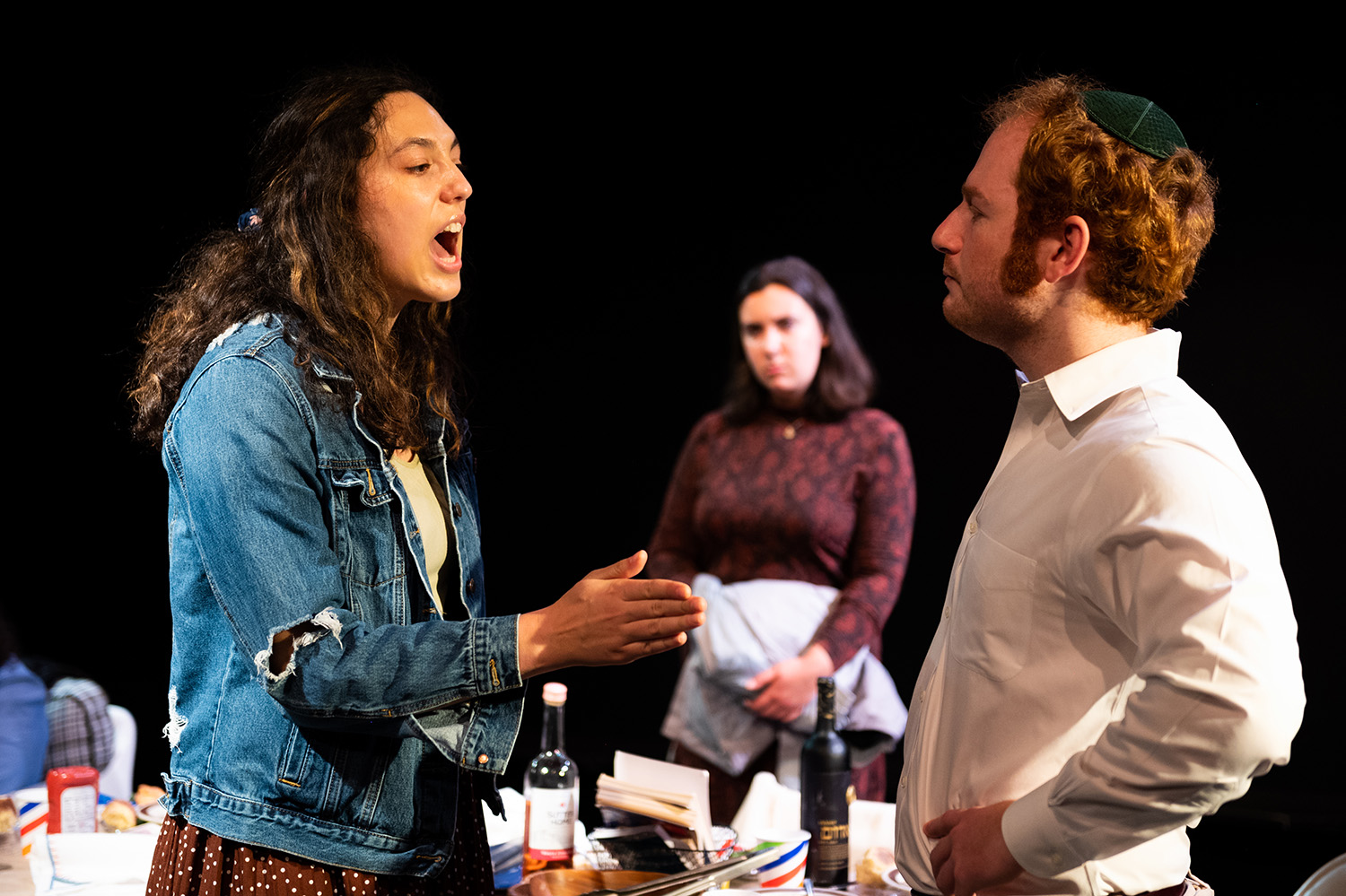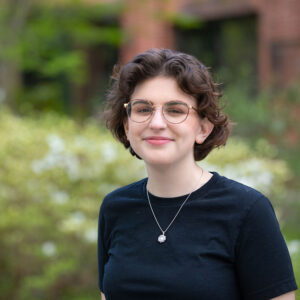These and Those, which premiered at the New York Theater festival during the last week of May, showed me a kind of Jewish theater I’d never seen before—at least in the English language. A thoroughly intra-communal production, the play opens with a group of six Jewish young adults meeting in a cramped basement apartment for a Shabbat lunch. Brought together by the whims of a Hillel Shabbos-matching system, they discuss baseball, halakha, and the ethnostate-elephant in the room over re-warmed, Hillel-sponsored schnitzel.
“How much are we willing to mutilate our souls in the pursuit of safety?” director Abigail Weaver writes in the program. These and Those is a play about what we’ll do in order to feel safe in community, in relationship, in a violent country in a violent world.
The play premiered the day after a weekend of three mass shootings, and the day before another at a school in Texas. Its questions are urgent: What will we do to feel a sense of security in a world where safety seems unreachable across geography and across generations? Do we find safety in a Jewish state, or by bringing more guns into our synagogues, or by giving up on our established communities altogether?
The Shabbat portrayed in These and Those contains a series of small and familiar tensions—over who should make Kiddush, a refusal to bless Israeli wine, right-wing speakers coming to the university. And at the 85-minute play’s halfway point, the outside world comes crashing in: Josh, a member of the group, has committed a faux pas and left his phone on, only to receive horrifying news. His jangling phone call, the only sound cue used in the entire production, breaks the peace of their Shabbat – and breaks the bubble between the play’s world and our own.
After seeing These and Those, I wondered how comprehensible it would be to non-Jewish audiences. It’s a Jewish play, and more specifically a Jewish play about modern Orthodox young people. That makes this story necessarily unfamiliar to consumers of most Jewish American media, which is usually either about Hasidim shown as a strange/interesting/threatening Other (think Disobedience, Unorthodox, or the similarly-named My Unorthodox Life) or secular Jews who are portrayed as more or less within the cultural standard (but funnier), whose Jewishness only comes up as a throwaway or a punchline (think Big Lebowski or Seinfeld). These and Those is about Jews who are very much in conversation with God, taking on what Leonard Cohen in 1964 called an “absence of the holy in Jewish cultural production.”
Playwright Ruth Geye wrote These and Those based on her own college experience trying to “thread the needle” and make change from within Jewish institutional life at NYU. Geye explains that experience by referencing what Alex V. Green once called the “Having Conversations Industrial Complex”: Deep political and spiritual divisions within the Jewish community are performatively talked about and talked through and talked over rather than making material change – often while exhausting those individuals, like Geye (and many of her characters), who would engage in dialogue with the institution rather than giving up on that institution altogether.
The unapologetic and hyperspecific Judaism of this play does not weaken or lessen its appeal; on the contrary, it strengthens this story. This play is so unapologetically Jewish, the playwright’s mother foisted snacks upon me on my way out. Geye and Weaver do not condescend to the audience or hold our hands, but immerse us fully and without explanation in the characters’ world. As Geye put it, “it’s not written with a translation guide interpolated”—and nor should it be.
I came away from These and Those thinking that we (collectively) or at least I (personally) need more plays like this. Not necessarily because theater is particularly effective or affective political propaganda to extend our agendas and help our communities finally understand themselves and each other (Geye herself is insistently unconvinced of the play’s value as a form of political propaganda). Rather, we need this because this small-scale theatermaking, this most intimate and interpersonal form of storytelling, is suited to our most intimate stories. The Yiddish playwrights that we are only just now beginning to revive knew this, and Geye and Weaver know it, too. Teatro LATEA, where the play was performed, holds 75 people, and the Shabbat table is only so big. Our pause, our breath, our moment before the world demolishes us again, is just small and big enough to create something holy.
Featured photo credit to Jake Capriotti.

